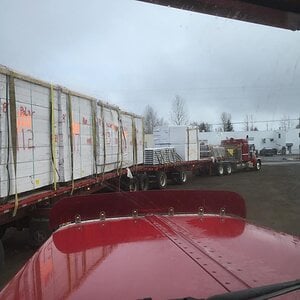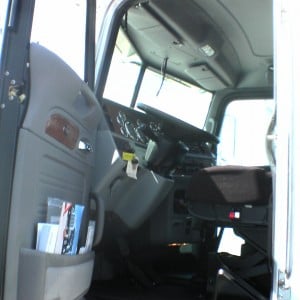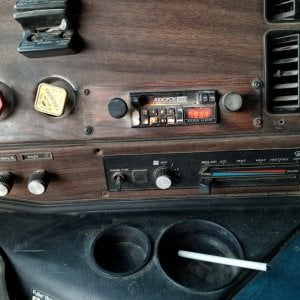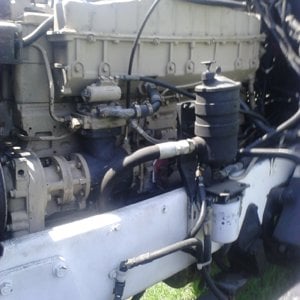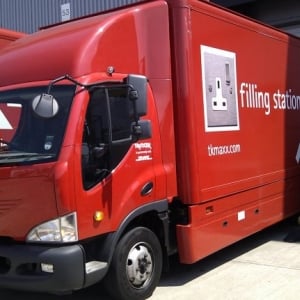truckerstrike08
Navigational Assistant
Conserving Energy
85 Ways to Save
Saving Energy And Money In Your Home
The major energy users in your home - heating system, air conditioning, electric water heater, refrigerator, dryer, lighting - all contribute to your overall electric utility bill. Here are some tips to help you use them more efficiently, lower your energy use and save money on your monthly electric bill.
Caution: Some people, including the elderly, infants and persons with circulatory problems, may require higher indoor temperatures (above 65 degrees F. at all times) to avoid health problems. Please seek the advice of your physician regarding winter and summer thermostat settings in your home.
Your Heating System
1. Keep your heating equipment well tuned with periodic maintenance by a professional service representative.
2. Use kitchen, bath and other ventilating fans sparingly. You can blow away a houseful of heat in just two to three hours using ventilating fans.Turn them off when their job is complete.
3. Set your thermostat at 68 degrees F. during the day and 60 degrees F. at night. You can save 3 percent on your heating costs for every degree you reduce the temperature below 70 degrees F. for the entire heating season. Special Advice to Heat Pump Owners: Heat pumps need to stay at a constant setting, unless you have a programmable electronic heat pump thermostat with adaptive recovery. Check with your heating or air conditioning contractor to determine the type of thermostat you have.
4. Turn down your thermostat at night or when you’re away for more than four hours during the day. Do not turn off your heating system entirely as this may cause pipes to freeze.
5. If you have a simple open-masonry fireplace, consider installing a glass screen, a convective grate, a radiant grate or a fireplace insert. They’ll help cut down on the loss of warm air through the fireplace chimney.
6. Maintain proper air circulation. Keep heating supply registers and cold-air return registers clear of draperies and furniture.
7. Clean or replace the filter in your forced-air heating system each month. Foam filters can be rinsed with water, but be sure they are dry before replacing. Fiberglass filters need to be replaced periodically.
8. Keep draperies and shades open during the day to let the sunshine in; close them at night.
9. Check the duct work for air leaks about once a year if you have a forced-air heating system. To do this, feel around the duct joints for escaping air when the fan is on. Relatively small leaks can be easily repaired by covering holes or cracks with duct tape. More stubborn problems may require caulking as well as taping.
10. Dust or vacuum radiator surfaces frequently. Dust and grime impede the flow of heat.
11. Don’t place lamps or television sets near your thermostat. Heat from these appliances is sensed by the thermostat and could cause your furnace to shut off sooner than is needed for adequate warmth.
12. Dress warmly. The human body gives off heat about 390 BTUs per hour for a man, and about 330 BTUs per hour for a woman. Dressing wisely can help you retain natural heat. Wear closely woven fabrics, which add at least a half degree in warmth. Slacks are at least a degree warmer than skirts; a light, long-sleeved sweater equals almost 2 degrees in added warmth; a heavy long-sleeved sweater adds about 3.7 degrees; and two lightweight sweaters add about 5 degrees in warmth because the air between them serves as insulation to keep in more body heat.
Your Cooling System
13. Keep your cooling system well tuned with periodic maintenance by a professional service representative. Ask your service representative how the energy efficiency of the system may be increased.
14. When selecting a central air conditioning unit, be sure to choose one with the proper capacity and highest efficiency.
15. Choose a central air conditioning unit or room air conditioning unit that uses a minimal amount of electricity to complete its task. High Seasonal Energy Efficiency Ratios (SEERs) - such as 13.0 SEER and above - correspond with greater efficiency. Energy Efficiency Ratios (EERs) provide the same guidance for room air conditioning units.
16. Install a whole-house ventilating fan in your attic or in an upstairs window to help air circulate in your home. Although not a replacement for a central air conditioning system, a fan is an effective way to stay comfortable on milder days.
17. Set your thermostat at 78 degrees F., a reasonably comfortable and energy efficient indoor temperature.
18. Don’t set your thermostat at a colder setting than normal when you turn your air conditioner on. It will not cool faster, but it will cool to a lower temperature than you need and use more energy.
19. Consider using a ceiling fan with your window air conditioner to spread the cooled air to other rooms. But be sure the air conditioner is large enough to help cool the additional space.
20. Don’t place lamps or television sets near your thermostat. Heat from these appliances is sensed by the thermostat and could cause your system to run longer than necessary.
21. Clean or replace air conditioning filters. Dirty air filters should be cleaned or replaced every month. Foam filters can be rinsed with water and wrung dry. Fiberglass filters need to be replaced.
22. No matter what kind of central air conditioning system you have, clean the outside condenser coil once a year. To clean, turn off the unit and spray the coils with water at a low pressure. (High water pressure may bend the fins.) Try to spray from the top of the unit down and outward.
23. Use duct tape to seal the cracks between each section of an air duct on your central air conditioning or forced-heating system.
Other Cooling Tips
24. Keep out the daytime sun with vertical louvers or awnings on the outside of your windows. Draw any draperies, blinds and shades.
25. Keep lights low or off when not needed. Electric lights generate heat and add to the load on your air conditioner.
26. Plant shade trees strategically around your home. Properly selected and planted shade trees can save up to $80 annually on the average electric utility bill.
27. Cook and use other heat-generating appliances in the early morning and late evening hours whenever possible.
28. Use window or whole-house ventilating fans to cool your home.
29. Use vents and exhaust fans to pull heat and moisture from the attic, kitchen, bath and laundry directly to the outside if you don’t have air conditioning.
Sealing Air Leaks
30. Insulate your attic floor or top-floor ceiling to a minimum of R-49 for these spaces. R-values or numbers indicate the resistance of an insulation material to heat flow. The higher the R-number, the more effectivebthe insulating capability. R-values appear on thebpackages of insulation materials.
31. Don’t insulate over eave vents or on top of recessed lighting fixtures or other heat producing equipment on the attic floor. Also, keep insulation at least 3 inches away from the sides of these types of fixtures.
32. Insulate heating and cooling ducts in unheated or uncooled areas.
33. Don’t let air seep into your home through the attic
access door. Check the door to make sure it is well insulated and weather stripped - otherwise, you’ll be wasting fuel to heat or cool the attic.
34. Test your windows and doors for air tightness. Add weather stripping and caulk where necessary. It's low cost and can save you 10 percent or more in annual energy costs.
35. Install storm windows. Combination screen and storm windows (triple-track glass combination) are the most convenient because they can be opened easily when there’s no need to run heating or cooling equipment.
Hot Water Heater
36. Buy a high-efficiency water heater. When you need a new water heater, purchase a unit with a high Energy Factor (EF) rating. EF ratings-such as those of .91 and above-correspond with greater efficiency. The higher the rating, the more efficiently the unit will operate.
37. Turn down the water heater temperature dial to 120 degrees F. or less, or to the “warm” setting. If you have a dishwasher, be sure to check your manufacturer’s instructions for minimum water temperature.
38. Insulate the outside of your water heater with an insulation blanket to reduce heat loss and save $10 to $20 a year.
Kitchen Energy Savers
39. Use cold water rather than hot to operate your food disposal. Cold water also helps get rid of grease by solidifying it, so it can then be ground up and washed away.
40. Install an aerator in your kitchen sink faucet.
41. Never boil water in an uncovered pan. Water will come to a boil faster and use less energy in a kettle or covered pan.
42. Keep range-top burners and reflectors clean. They will reflect heat better, and you will save energy.
43. Match the size of the pan to the heating element. More heat will get to the pan, and less will be lost to the surrounding air.
44. Get in the habit of turning off the elements or surface units on your electric stove several minutes before completing the allotted cooking time. The heating element will stay hot long enough to finish the cooking without wasting electricity.
45. Turn off the oven five to 10 minutes before cooking time is up and let trapped heat finish the cooking.
46. When using the oven, cook as many foods as you can at one time.
47. Avoid opening the oven door repeatedly to check food that is cooking. This allows heat to escape and rets in the use of more energy to complete the cooking of your food. Instead, watch the clock or use a timer.
48. Use small electric cooking appliances or ovens for small meals rather than the kitchen range or oven. They use less energy.
49. Use pressure cookers and microwave ovens if you have them. They save energy by reducing cooking times.
50. Don’t preheat the oven unless absolutely necessary, and then for no more than 10 minutes.
51. Avoid using the broiler. It is a big energy user.
52. Thaw frozen foods before cooking. It will save time and energy.
Dishwashing
53. When buying a dishwasher, look for an energy-efficient model with air power and/or overnight dry settings. These features automatically turn off the dishwasher after the rinse cycle. This can save you up to 10 percent of your dishwashing energy costs.
54. Scrape dishes and rinse with cold water from the faucet before loading them into the dishwasher. Avoid using the dishwasher's pre-rinse cycle.
55. Be sure your dishwasher is full but not overloaded when you turn it on.
56. Don’t use the “rinse-hold” on your machine for just a few soiled dishes. It uses three to seven gallons of hot water each time you use it.
Refrigerator/Freezer
57. Don’t keep your refrigerator or freezer too cold. Recommended temperatures: 38 degrees F. to 40 degrees F. for fresh food compartments of the refrigerator; 5 degrees F. for the freezer compartment. Separate freezers for long-term storage should be kept at zero degrees F. 68. Open the refrigerator or freezer door only when necessary, and don’t hold it open any longer than necessary.
58. Regularly defrost manual-defrost refrigerators and freezers. Frost buildup increases the amount of energy needed to keep the refrigerator at its proper temperature. Never allow frost to build up more than onequarter of an inch.
59. If possible, don’t place your refrigerator or freezer in direct sunlight or near the stove.
60. Make sure your refrigerator door seals are airtight. Test them by closing the door on a piece of paper or dollar bill so it is half in and half out of the refrigerator. If you can pull the paper or dollar out easily, the hinge may need adjusting or the seal may need replacing.
Laundry
61.Wash clothes in warm or cold water, rinse in cold.
62. Fill washers and clothes dryers but do not overload them.
63. Keep your clothes dryer’s lint screen clean and its outside exhaust free of obstructions. Clean the lint screen after each load of laundry, and check the exhaust regularly. A lint screen in need of cleaning and a clogged exhaust can lengthen drying time and increase the amount of energy used.
64. Save energy by using the old-fashioned clothesline. Doing so can make clothes seem fresher and dryer than those emerging from a dryer.
Ironing
65. Remove from the dryer and hang clothes that will need ironing while they are still damp.
66. Save energy needed for ironing by hanging clothes in the bathroom while you’re bathing or showering. By doing so, you can steam some wrinkles out and cut down on ironing time.
67. Avoid piecemeal ironing. If possible, iron a large load of clothes at a time.
Bathroom Energy Savers
68. Take showers rather than tub baths, but limit both your showering time and the water flow if you want to save energy.
69. Install a water-flow controller in the pipe at the showerhead. This saves a considerable amount of hot water and the energy used to produce it.
70. Install an aerator in the bathroom sink.
71. Don’t let water run while shaving. This wastes hot water and the energy used to heat it.
72. Repair leaky faucets immediately.
Indoor Lighting
73. Use compact fluorescent bulbs. They produce about three to four times as much light per watt as incandescent bulbs. While compact fluorescents are initially more expensive, they last up to 10 times longer. Compact fluorescent bulbs work best in the kitchen, bathroom or a work area. Deluxe white fluorescent bulbs produce the most pleasing light.
74. Halogen bulbs are another energy-efficient choice for
indoor and outdoor lighting. They use about 25 percent less energy than traditional incandescents, and produce an intense white light, making them ideal for spot, flood and security lighting. Halogen torchieres, however, can pose a fire hazard due to the high temperatures produced by these bulbs.
75. Turn off lights in any room not being used, even if your absence will only be momentary.
76. When using incandescent bulbs, use the lowest wattage possible or convenient. In many cases, a lower wattage bulb can be substituted for the one currently being used.
77. Light-zone your home and save electricity. Concentrate lighting in reading and work areas, and where it’s needed for safety, such as in stairwells. Reduce lighting in other areas, but avoid very sharp contrasts.
78. Consider installing solid-state dimmers. They make it easy to reduce lighting intensity in a room, saving energy. Most will not work with fluorescent bulbs however.
79. Use one large bulb instead of several small ones in areas where bright light is needed.
80. Socket extenders and special adapters let you use compact fluorescent bulbs in your table lamps.
81. When choosing a new lamp, buy three-way lamps. They make it easy to keep lighting levels low when intense light is not necessary, and that saves electricity. Use the high switch only for reading or other activities that require brighter light.
82. “Long life” bulbs emit less light than a standard incandescent bulb of the same wattage. Use them only where the long-life feature may be advantageous, such as hard to-reach places.
Outdoor Lighting
83. Turn on outdoor lights only when needed.
84. Use timers, motion detectors, heat sensors or photocell controls for light fixtures when possible.
And Remember to. . .
85. Check out our Energy Usage Chart to learn the typical wattage and kilowatt hours per year consumed by typical household appliances.
85 Ways to Save
Saving Energy And Money In Your Home
The major energy users in your home - heating system, air conditioning, electric water heater, refrigerator, dryer, lighting - all contribute to your overall electric utility bill. Here are some tips to help you use them more efficiently, lower your energy use and save money on your monthly electric bill.
Caution: Some people, including the elderly, infants and persons with circulatory problems, may require higher indoor temperatures (above 65 degrees F. at all times) to avoid health problems. Please seek the advice of your physician regarding winter and summer thermostat settings in your home.
Your Heating System
1. Keep your heating equipment well tuned with periodic maintenance by a professional service representative.
2. Use kitchen, bath and other ventilating fans sparingly. You can blow away a houseful of heat in just two to three hours using ventilating fans.Turn them off when their job is complete.
3. Set your thermostat at 68 degrees F. during the day and 60 degrees F. at night. You can save 3 percent on your heating costs for every degree you reduce the temperature below 70 degrees F. for the entire heating season. Special Advice to Heat Pump Owners: Heat pumps need to stay at a constant setting, unless you have a programmable electronic heat pump thermostat with adaptive recovery. Check with your heating or air conditioning contractor to determine the type of thermostat you have.
4. Turn down your thermostat at night or when you’re away for more than four hours during the day. Do not turn off your heating system entirely as this may cause pipes to freeze.
5. If you have a simple open-masonry fireplace, consider installing a glass screen, a convective grate, a radiant grate or a fireplace insert. They’ll help cut down on the loss of warm air through the fireplace chimney.
6. Maintain proper air circulation. Keep heating supply registers and cold-air return registers clear of draperies and furniture.
7. Clean or replace the filter in your forced-air heating system each month. Foam filters can be rinsed with water, but be sure they are dry before replacing. Fiberglass filters need to be replaced periodically.
8. Keep draperies and shades open during the day to let the sunshine in; close them at night.
9. Check the duct work for air leaks about once a year if you have a forced-air heating system. To do this, feel around the duct joints for escaping air when the fan is on. Relatively small leaks can be easily repaired by covering holes or cracks with duct tape. More stubborn problems may require caulking as well as taping.
10. Dust or vacuum radiator surfaces frequently. Dust and grime impede the flow of heat.
11. Don’t place lamps or television sets near your thermostat. Heat from these appliances is sensed by the thermostat and could cause your furnace to shut off sooner than is needed for adequate warmth.
12. Dress warmly. The human body gives off heat about 390 BTUs per hour for a man, and about 330 BTUs per hour for a woman. Dressing wisely can help you retain natural heat. Wear closely woven fabrics, which add at least a half degree in warmth. Slacks are at least a degree warmer than skirts; a light, long-sleeved sweater equals almost 2 degrees in added warmth; a heavy long-sleeved sweater adds about 3.7 degrees; and two lightweight sweaters add about 5 degrees in warmth because the air between them serves as insulation to keep in more body heat.
Your Cooling System
13. Keep your cooling system well tuned with periodic maintenance by a professional service representative. Ask your service representative how the energy efficiency of the system may be increased.
14. When selecting a central air conditioning unit, be sure to choose one with the proper capacity and highest efficiency.
15. Choose a central air conditioning unit or room air conditioning unit that uses a minimal amount of electricity to complete its task. High Seasonal Energy Efficiency Ratios (SEERs) - such as 13.0 SEER and above - correspond with greater efficiency. Energy Efficiency Ratios (EERs) provide the same guidance for room air conditioning units.
16. Install a whole-house ventilating fan in your attic or in an upstairs window to help air circulate in your home. Although not a replacement for a central air conditioning system, a fan is an effective way to stay comfortable on milder days.
17. Set your thermostat at 78 degrees F., a reasonably comfortable and energy efficient indoor temperature.
18. Don’t set your thermostat at a colder setting than normal when you turn your air conditioner on. It will not cool faster, but it will cool to a lower temperature than you need and use more energy.
19. Consider using a ceiling fan with your window air conditioner to spread the cooled air to other rooms. But be sure the air conditioner is large enough to help cool the additional space.
20. Don’t place lamps or television sets near your thermostat. Heat from these appliances is sensed by the thermostat and could cause your system to run longer than necessary.
21. Clean or replace air conditioning filters. Dirty air filters should be cleaned or replaced every month. Foam filters can be rinsed with water and wrung dry. Fiberglass filters need to be replaced.
22. No matter what kind of central air conditioning system you have, clean the outside condenser coil once a year. To clean, turn off the unit and spray the coils with water at a low pressure. (High water pressure may bend the fins.) Try to spray from the top of the unit down and outward.
23. Use duct tape to seal the cracks between each section of an air duct on your central air conditioning or forced-heating system.
Other Cooling Tips
24. Keep out the daytime sun with vertical louvers or awnings on the outside of your windows. Draw any draperies, blinds and shades.
25. Keep lights low or off when not needed. Electric lights generate heat and add to the load on your air conditioner.
26. Plant shade trees strategically around your home. Properly selected and planted shade trees can save up to $80 annually on the average electric utility bill.
27. Cook and use other heat-generating appliances in the early morning and late evening hours whenever possible.
28. Use window or whole-house ventilating fans to cool your home.
29. Use vents and exhaust fans to pull heat and moisture from the attic, kitchen, bath and laundry directly to the outside if you don’t have air conditioning.
Sealing Air Leaks
30. Insulate your attic floor or top-floor ceiling to a minimum of R-49 for these spaces. R-values or numbers indicate the resistance of an insulation material to heat flow. The higher the R-number, the more effectivebthe insulating capability. R-values appear on thebpackages of insulation materials.
31. Don’t insulate over eave vents or on top of recessed lighting fixtures or other heat producing equipment on the attic floor. Also, keep insulation at least 3 inches away from the sides of these types of fixtures.
32. Insulate heating and cooling ducts in unheated or uncooled areas.
33. Don’t let air seep into your home through the attic
access door. Check the door to make sure it is well insulated and weather stripped - otherwise, you’ll be wasting fuel to heat or cool the attic.
34. Test your windows and doors for air tightness. Add weather stripping and caulk where necessary. It's low cost and can save you 10 percent or more in annual energy costs.
35. Install storm windows. Combination screen and storm windows (triple-track glass combination) are the most convenient because they can be opened easily when there’s no need to run heating or cooling equipment.
Hot Water Heater
36. Buy a high-efficiency water heater. When you need a new water heater, purchase a unit with a high Energy Factor (EF) rating. EF ratings-such as those of .91 and above-correspond with greater efficiency. The higher the rating, the more efficiently the unit will operate.
37. Turn down the water heater temperature dial to 120 degrees F. or less, or to the “warm” setting. If you have a dishwasher, be sure to check your manufacturer’s instructions for minimum water temperature.
38. Insulate the outside of your water heater with an insulation blanket to reduce heat loss and save $10 to $20 a year.
Kitchen Energy Savers
39. Use cold water rather than hot to operate your food disposal. Cold water also helps get rid of grease by solidifying it, so it can then be ground up and washed away.
40. Install an aerator in your kitchen sink faucet.
41. Never boil water in an uncovered pan. Water will come to a boil faster and use less energy in a kettle or covered pan.
42. Keep range-top burners and reflectors clean. They will reflect heat better, and you will save energy.
43. Match the size of the pan to the heating element. More heat will get to the pan, and less will be lost to the surrounding air.
44. Get in the habit of turning off the elements or surface units on your electric stove several minutes before completing the allotted cooking time. The heating element will stay hot long enough to finish the cooking without wasting electricity.
45. Turn off the oven five to 10 minutes before cooking time is up and let trapped heat finish the cooking.
46. When using the oven, cook as many foods as you can at one time.
47. Avoid opening the oven door repeatedly to check food that is cooking. This allows heat to escape and rets in the use of more energy to complete the cooking of your food. Instead, watch the clock or use a timer.
48. Use small electric cooking appliances or ovens for small meals rather than the kitchen range or oven. They use less energy.
49. Use pressure cookers and microwave ovens if you have them. They save energy by reducing cooking times.
50. Don’t preheat the oven unless absolutely necessary, and then for no more than 10 minutes.
51. Avoid using the broiler. It is a big energy user.
52. Thaw frozen foods before cooking. It will save time and energy.
Dishwashing
53. When buying a dishwasher, look for an energy-efficient model with air power and/or overnight dry settings. These features automatically turn off the dishwasher after the rinse cycle. This can save you up to 10 percent of your dishwashing energy costs.
54. Scrape dishes and rinse with cold water from the faucet before loading them into the dishwasher. Avoid using the dishwasher's pre-rinse cycle.
55. Be sure your dishwasher is full but not overloaded when you turn it on.
56. Don’t use the “rinse-hold” on your machine for just a few soiled dishes. It uses three to seven gallons of hot water each time you use it.
Refrigerator/Freezer
57. Don’t keep your refrigerator or freezer too cold. Recommended temperatures: 38 degrees F. to 40 degrees F. for fresh food compartments of the refrigerator; 5 degrees F. for the freezer compartment. Separate freezers for long-term storage should be kept at zero degrees F. 68. Open the refrigerator or freezer door only when necessary, and don’t hold it open any longer than necessary.
58. Regularly defrost manual-defrost refrigerators and freezers. Frost buildup increases the amount of energy needed to keep the refrigerator at its proper temperature. Never allow frost to build up more than onequarter of an inch.
59. If possible, don’t place your refrigerator or freezer in direct sunlight or near the stove.
60. Make sure your refrigerator door seals are airtight. Test them by closing the door on a piece of paper or dollar bill so it is half in and half out of the refrigerator. If you can pull the paper or dollar out easily, the hinge may need adjusting or the seal may need replacing.
Laundry
61.Wash clothes in warm or cold water, rinse in cold.
62. Fill washers and clothes dryers but do not overload them.
63. Keep your clothes dryer’s lint screen clean and its outside exhaust free of obstructions. Clean the lint screen after each load of laundry, and check the exhaust regularly. A lint screen in need of cleaning and a clogged exhaust can lengthen drying time and increase the amount of energy used.
64. Save energy by using the old-fashioned clothesline. Doing so can make clothes seem fresher and dryer than those emerging from a dryer.
Ironing
65. Remove from the dryer and hang clothes that will need ironing while they are still damp.
66. Save energy needed for ironing by hanging clothes in the bathroom while you’re bathing or showering. By doing so, you can steam some wrinkles out and cut down on ironing time.
67. Avoid piecemeal ironing. If possible, iron a large load of clothes at a time.
Bathroom Energy Savers
68. Take showers rather than tub baths, but limit both your showering time and the water flow if you want to save energy.
69. Install a water-flow controller in the pipe at the showerhead. This saves a considerable amount of hot water and the energy used to produce it.
70. Install an aerator in the bathroom sink.
71. Don’t let water run while shaving. This wastes hot water and the energy used to heat it.
72. Repair leaky faucets immediately.
Indoor Lighting
73. Use compact fluorescent bulbs. They produce about three to four times as much light per watt as incandescent bulbs. While compact fluorescents are initially more expensive, they last up to 10 times longer. Compact fluorescent bulbs work best in the kitchen, bathroom or a work area. Deluxe white fluorescent bulbs produce the most pleasing light.
74. Halogen bulbs are another energy-efficient choice for
indoor and outdoor lighting. They use about 25 percent less energy than traditional incandescents, and produce an intense white light, making them ideal for spot, flood and security lighting. Halogen torchieres, however, can pose a fire hazard due to the high temperatures produced by these bulbs.
75. Turn off lights in any room not being used, even if your absence will only be momentary.
76. When using incandescent bulbs, use the lowest wattage possible or convenient. In many cases, a lower wattage bulb can be substituted for the one currently being used.
77. Light-zone your home and save electricity. Concentrate lighting in reading and work areas, and where it’s needed for safety, such as in stairwells. Reduce lighting in other areas, but avoid very sharp contrasts.
78. Consider installing solid-state dimmers. They make it easy to reduce lighting intensity in a room, saving energy. Most will not work with fluorescent bulbs however.
79. Use one large bulb instead of several small ones in areas where bright light is needed.
80. Socket extenders and special adapters let you use compact fluorescent bulbs in your table lamps.
81. When choosing a new lamp, buy three-way lamps. They make it easy to keep lighting levels low when intense light is not necessary, and that saves electricity. Use the high switch only for reading or other activities that require brighter light.
82. “Long life” bulbs emit less light than a standard incandescent bulb of the same wattage. Use them only where the long-life feature may be advantageous, such as hard to-reach places.
Outdoor Lighting
83. Turn on outdoor lights only when needed.
84. Use timers, motion detectors, heat sensors or photocell controls for light fixtures when possible.
And Remember to. . .
85. Check out our Energy Usage Chart to learn the typical wattage and kilowatt hours per year consumed by typical household appliances.

